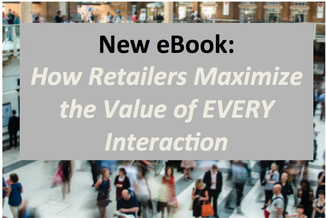Marketing automation has fundamentally changed the way marketers do business. To be able to schedule cross-channel campaigns that deliver on time and on target frees up a lot of opportunity for marketers to focus on things like strategy, creative, and feedback loops. Campaigns run with fewer resources, still generating and nurturing leads. But unlike the flawless “set it and forget it” reliability of, say, a crock pot, automation has its risks.
As marketers had to double-down on creative solutions during the pandemic, change has been happening behind the scenes. Whether it’s doing away with cookies or the recent news that Nielsen’s audience measurement tools are being applied to Twitter’s video content, data use is shifting, always.

Coming off of the holiday season, retailers have an opportunity to look back at what worked – and what didn’t – and refine their plans for the new year. And while the holiday retail spike can provide a lot of insight, it’s important to look at the broader view to understand the entire year. Our CEO Michael Caccavale and I took a look at eMarketer’s consumer behavior roundup and discussed some fundamental considerations that marketers simply cannot overlook any time of the year.
Marketing technology providers talk a big game about integration but few live up to the hype. More often than not, the addition of a new marketing technology to an existing program creates a new silo – a repository of data that does not flow freely within an organization but remains stagnant within a single piece of technology. But, much like kindergarteners, marketing technologies need to be taught to play well together and to share.
The Super Bowl hype is fully upon us, and with travel packages reaching upwards of $10,000 (and the Patriots out) let’s face it, most of us are going to catch the game on TV. And this year, more than ever, the game isn’t just about sitting around the TV with some snacks and good friends. Second – and third – screens will also join the party. So how do multiple screens play into the attention economy? It’s more than just messaging – it’s about use.
We live in a multi-channel world. Consumers not only use more than one channel to make a purchase, they often use those channels simultaneously (checking online prices in stores, watching TV while browsing on their laptops) There are many factors that affect the quality of the cross channel experience. Externally, messaging, visuals, and functionality are all critical while internally marketers need to button up things like offer optimization, attribution modeling, and analytics.







